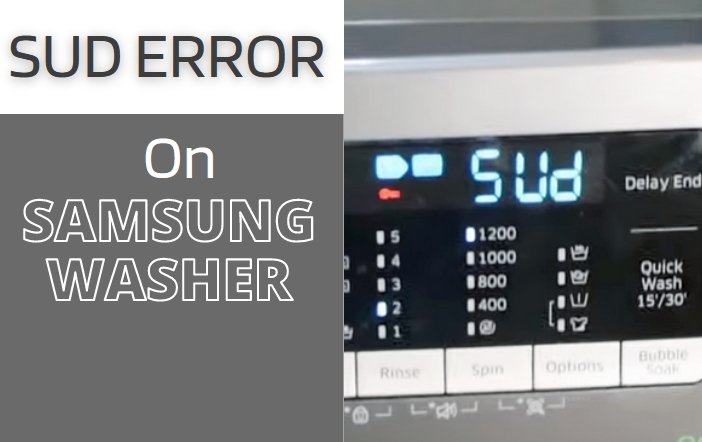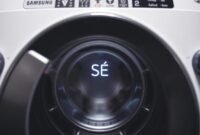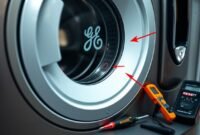Have you ever been in the middle of a laundry session and suddenly faced the mysterious ‘SUD’ error on your Samsung washer? You’re not alone. Many homeowners wonder, “Will SUD error fix itself?” or “Do I need to call for repairs?”
It’s natural to feel a mix of confusion and concern. After all, laundry waits for no one, and we all want our appliances running smoothly. Let’s understand this error and how to address it effectively.
What Does SUD Mean on Samsung Washer?
The SUD error code on Samsung washers indicates that the machine has detected excessive soap suds in the drum.

While a certain amount of suds is essential for cleaning, an overabundance can hinder the machine’s performance, potentially leading to subpar cleaning results and even damage to the washer. This error is a protective measure, pausing the cycle to allow the suds to dissipate.
Read also: Samsung VRT Washer Error Codes and How to Solve It
How Can I Address the SUD Error on My Samsung Washing Machine?
When faced with the ‘SUD’ error on your Samsung washer, what steps can you take to address it effectively?
● Detergent Quantity and Type
The primary culprit behind the SUD error often boils down to the basics: the detergent. Using an excessive amount can lead to an overproduction of suds. It’s essential to adhere strictly to the detergent manufacturer’s guidelines.
If you’re confident you’re using the right amount but still face the error, consider slightly reducing the detergent quantity. Furthermore, modern washers, especially high-efficiency ones like Samsung, require specific low-sudsing HE detergents.
These detergents are formulated to produce fewer suds, ensuring smooth operation. Using a non-HE detergent can lead to an imbalance in suds production, triggering the error.
● Remove Detergent Residue
Sometimes, the issue isn’t with the current wash but a residue from previous ones. Remnants of detergent can accumulate within the machine, leading to an overproduction of suds in subsequent washes.
Run a long wash cycle without clothes at the highest temperature to address this. This high-temperature wash acts as a reset, dissolving and flushing out any lingering detergent or suds. It’s a simple yet effective way to ensure the drum and other components are free from detergent remnants.
● Clean the Drain Pump Filter
The drain pump filter is crucial in ensuring that the water drains effectively. However, with regular use, it can become clogged with lint, debris, and even detergent residue. A clogged filter can impede the flow of water, leading to an accumulation of suds.
To address this, locate the filter at the bottom front of the washer. Access, clean, and ensure it’s free from any obstructions. Regularly maintaining this filter can prevent many issues, including the SUD error.
Read also: Clearing the Way: How to Fix Clogged Water Pipes in House
● Inspect the Foam Level Sensor
Modern washers are equipped with various sensors to optimize their performance. One such sensor is the foam level sensor, which gauges the amount of suds in the machine. If this sensor malfunctions or gets dirty, it might detect excessive suds even when there aren’t.
To ensure this sensor isn’t the cause of the error, inspect it for any signs of damage or dirt. Cleaning it might be as simple as using a soft brush with warm water and mild detergent. If the sensor appears damaged or malfunctioning after cleaning, consider replacing it.
How Long Should I Expect the SUD Error to Persist?
The washer, designed with user safety and appliance longevity in mind, pauses its cycle when it detects an overabundance of suds. This pause is a temporary halt, allowing the excessive suds to dissipate naturally.
Sometimes, giving the machine a brief respite will rectify the issue. The washer’s built-in sensors will determine when the suds level is back to a safe threshold and automatically resume the cycle.
However, if the error persists after the above troubleshooting steps, it might be time to consult a professional appliance technician.
So, what does SUD mean on Samsung washer? It’s a protective measure signaling excessive suds in the drum. By understanding its causes and applying effective troubleshooting techniques, you can ensure a smooth and efficient laundry experience.


